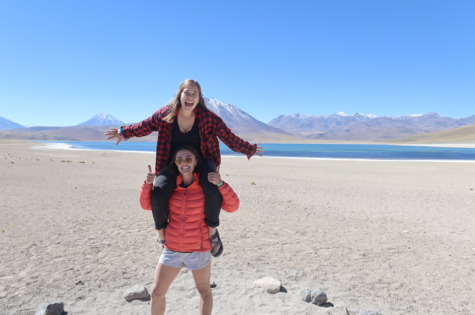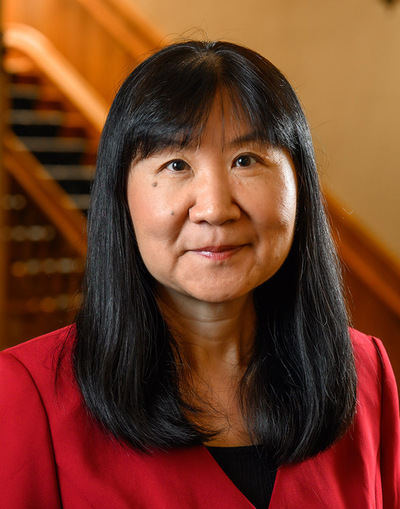

Ever since sending students home mid-semester in spring of 2020, Notre Dame’s study abroad team has been working to get students back into the program.
Their efforts have been successful; upcoming study abroad numbers will exceed pre-pandemic enrollment. A total of 824 students studied abroad in the 2019-2020 academic school year, and more than 1,000 students will depart this coming year.
It’s the largest number of students the program has ever seen, but this growth hasn’t come without its challenges.
Coming home in crisis
As Notre Dame International’s director of international safety and security, Jaime Signoracci played a key role in determining how and when to send students home safely.
Signoracci and the study abroad team were well-aware of COVID-19 in December of 2019 and January of 2020. After careful communication with Notre Dame International staff at the Beijing Global Gateway and Hong Kong Global Center, the University first barred students and staff from traveling to China and a few other high-risk countries.
When the pandemic began to spark global unease, University officials were already benchmarking and checking in with other U.S. based peer institutions.
“When it became even more of a concern, based on our exposure by the number of travelers and our facilities abroad, the people that needed to be informed were already part of the conversation,” Signoracci said.
The University made the decision to send all study abroad students home by March 2020. At that point, Notre Dame International worked closely with Anthony Travel to ensure that students returned home as quickly and safely as possible.
Mid-pandemic projects
While study abroad’s in-person activities paused, the team quickly began creating solutions to keep international education alive.
Hong Zhu, Notre Dame International’s senior director of global education, was accustomed to sending Notre Dame students abroad and bringing international students to campus. Her focus suddenly shifted to overseeing the development of pre-departure courses and a podcast where students discussed health, safety, and identities abroad.
“Those are the resources that we created during that time, that we didn’t have time to do while we had students abroad,” she said. “But the biggest thing we did during the pandemic was scenario planning.”
Scenario planning
Shortly after students evacuated their respective countries in spring 2020, Signoracci began planning how to send future groups abroad safely.
She and her team dove into intense scenario planning, developing a set of COVID-19 risk indicators to monitor in all of the study abroad sites.
The State Department travel advisory levels, the CDC travel health notices, COVID-19 case numbers, availability of hospital care, and more were all taken into account when considering student health.
Beyond physical health, Signoracci and her team considered the mental impact of strict travel requirements.
“Upon arrival, quarantines were required. That’s obviously a very challenging experience, especially a lengthy stay for two weeks or 21 days, considering the mental health crisis that many of our students are finding themselves in,” she said.
Constant checks with Notre Dame’s global gateways and centers also became a part of the planning. The study abroad team wanted to ensure that participants would receive adequate care in any kind of emergency or that family members could fly over to see a student in a crisis.
First, Notre Dame International eased back into travel. Their efforts helped to establish an abbreviated program in Rome for architecture students in summer of 2021.
Then, after more than a year of careful planning, Notre Dame International fully resumed their study abroad programs in fall of 2021.
 Hong Zhu, Senior Director of Global Education
Hong Zhu, Senior Director of Global Education Jaime Signoracci, Director of International Travel Safety
Jaime Signoracci, Director of International Travel SafetyGetting back abroad
Cautiously optimistic, the study abroad team determined which programs were accessible to students and would provide an engaging, in-person experience.
They held off on telling students to purchase airline tickets until they could almost completely confirm that each program would not be canceled.
“We didn’t have to call off any program once we said, ‘It’s a go,’” Zhu said. “That is quite an accomplishment, I would say.”
They sent their first groups of students with knowledge of many plans in place, which ranged from hotels booked for anyone with COVID-19 to instructions on how and why to complete daily health checks.
The plan for each program developed through individual attention and detailed discussion with every area’s team.
“We work with them and ask, ‘What is your policy? If a student tests positive, are you providing them support or are we?’” Zhu said. “I would say that’s probably the biggest piece of getting students there: how we can do it safely.”
Slowly, the program began to rebuild, with 783 students traveling abroad in the 2021-2022 academic school year and the program was on track to see record numbers this coming year.
Signoracci feels comfortable going forward with study abroad, although she still keeps a diligent watch on COVID-19 numbers in each country.
“I would say nowadays scenario planning is a little bit simpler, because of high vaccination rates of students and high vaccination rates of where we send students abroad,” she said.
Still, the challenges have not completely stopped.
“There are just too many uncertainties,” said Zhu. “And -- not sugar coating -- we have had students who have tested positive, but we have supporting staff and program assistants who are with the students in quarantine and help them,” Zhu said.
Going forward, some of these challenges will actually bring continued enhancements to the program. Zhu believes that it is much easier to connect with global gateways and centers and to accommodate virtual learning when students are sick.
Still, the in-person experience remains the core of the program. Continuing that experience is nothing less than essential to the study abroad team, especially to Zhu and Signoracci.
“You change whether you recognize or not, once you have an experience abroad, in terms of understanding the differences, understanding the commonalities, and understanding how we can work together despite our differences. I think that's something only an international experience, a study abroad experience, can bring you,” Zhu said.
Signoracci agreed.
“I think that's just so important to becoming a well-rounded individual, a global citizen, and a traveler for life.”
Learn more about study abroad opportunities at Notre Dame.
Originally published by at international.nd.edu on August 08, 2022.